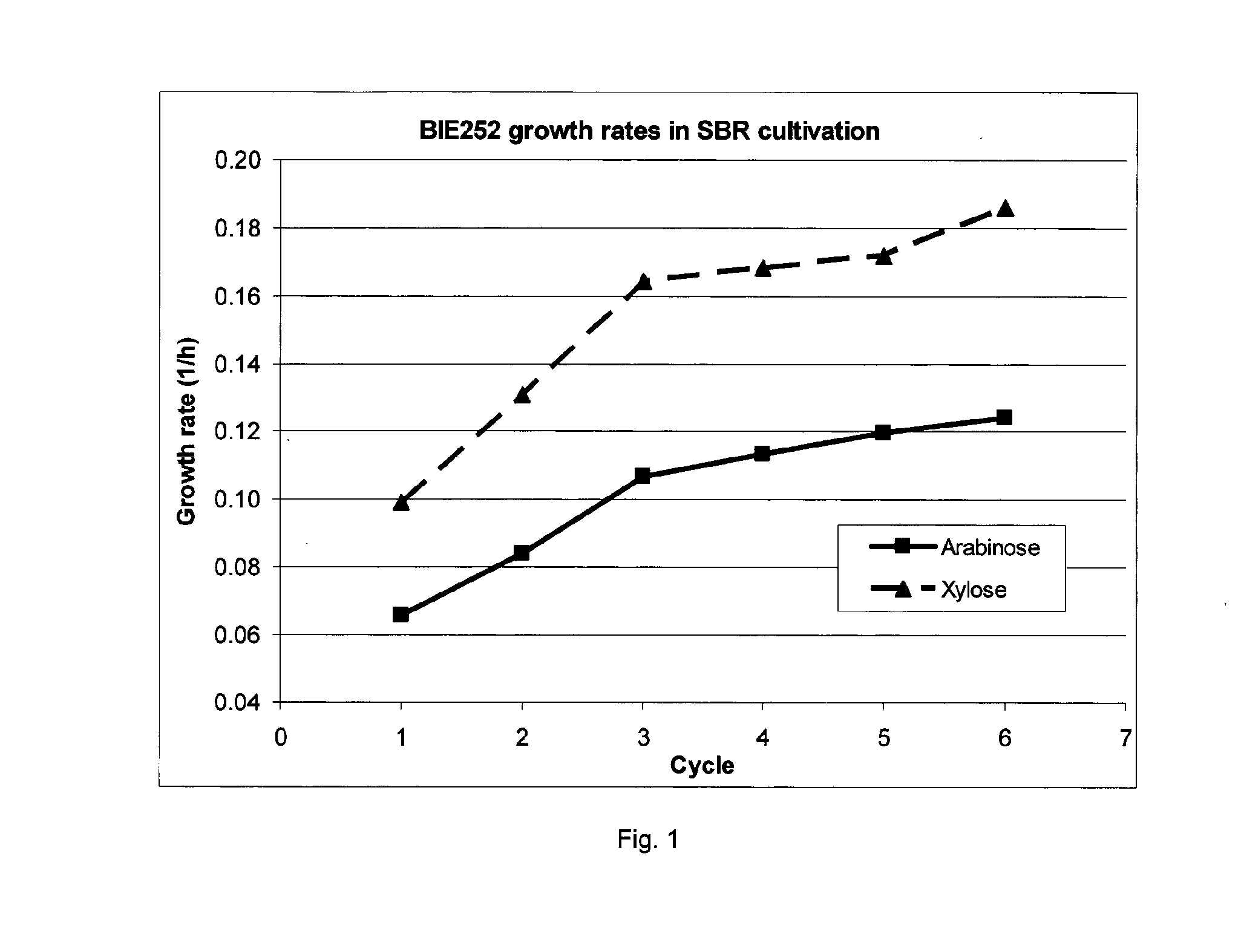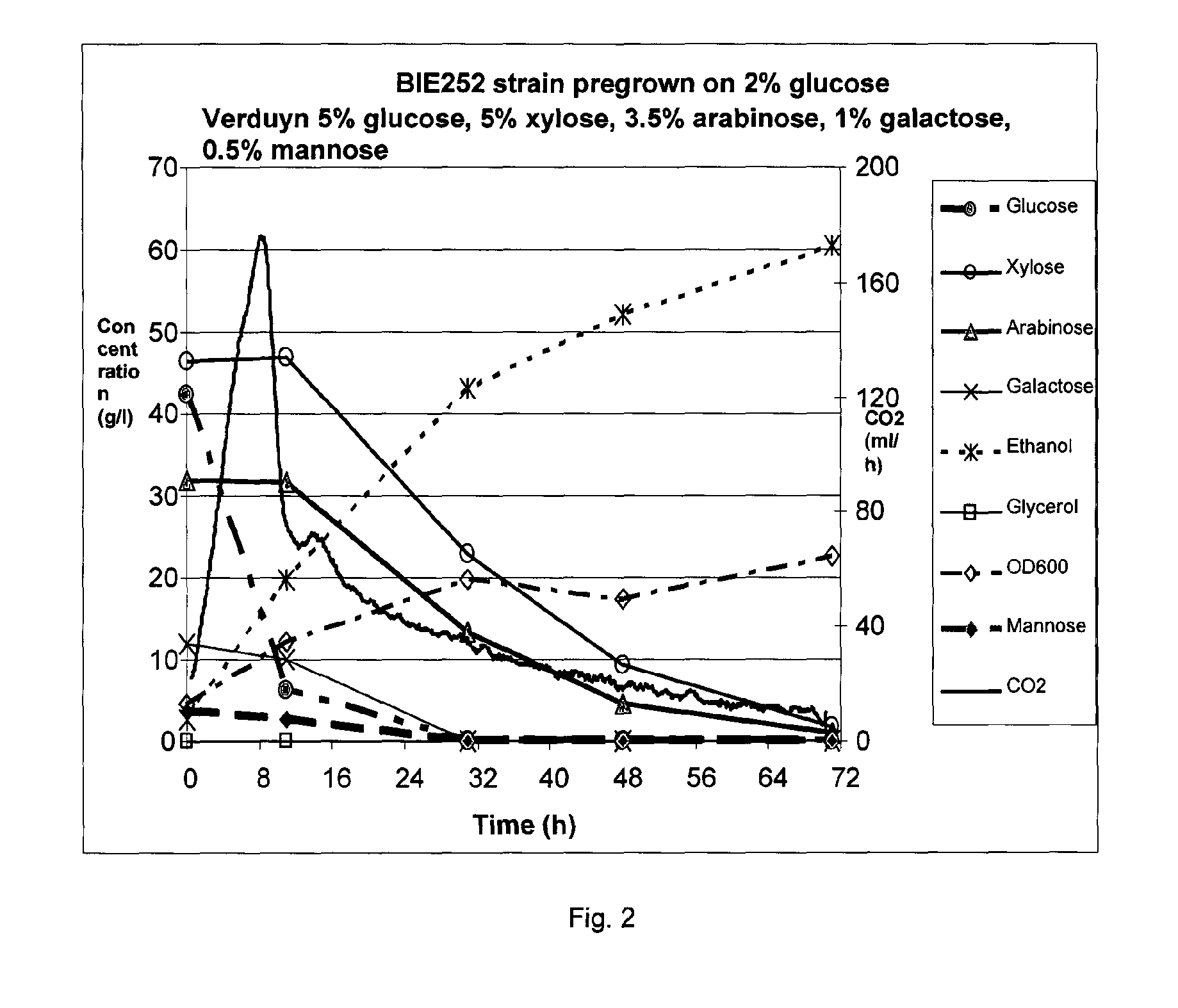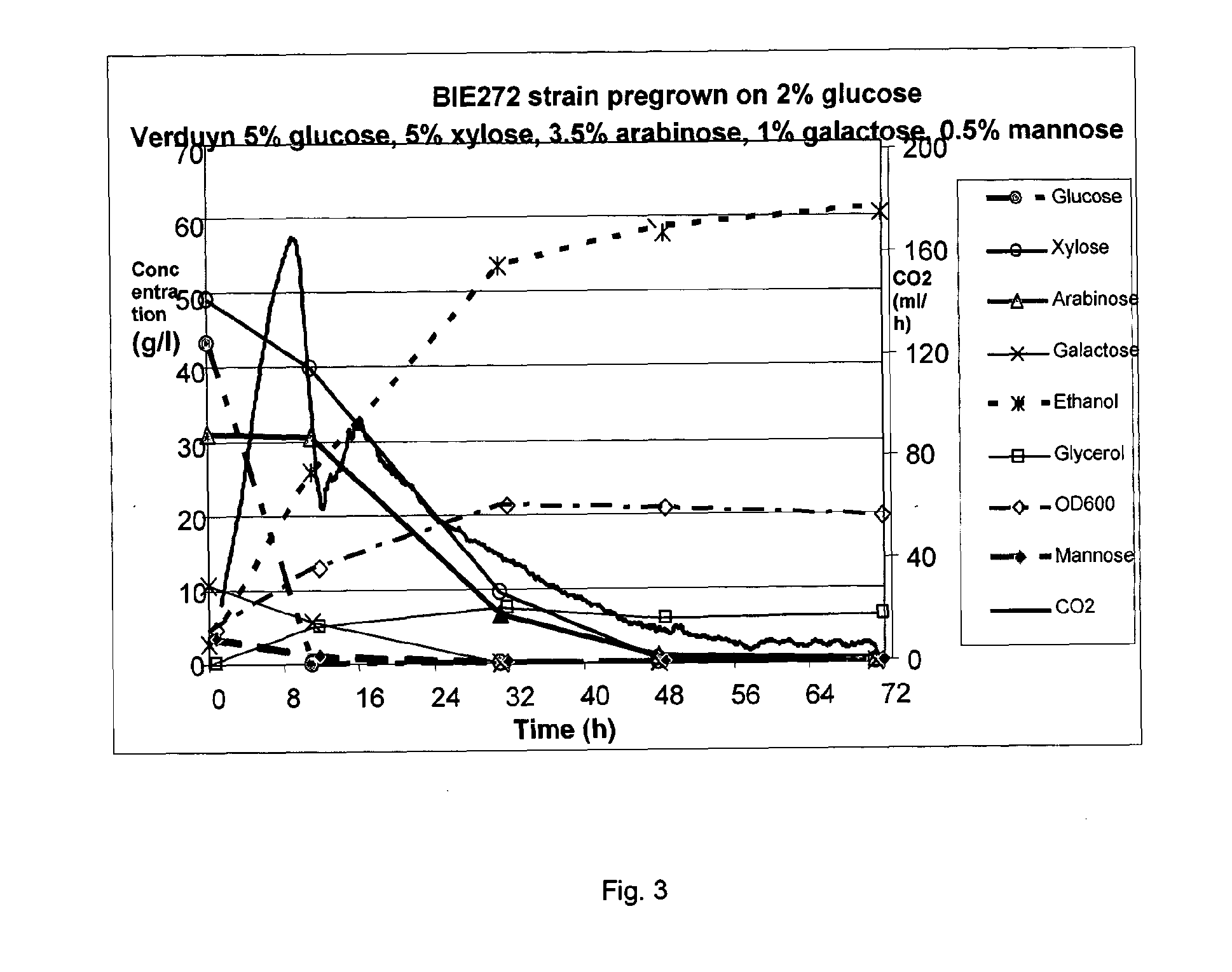Yeast cell capable of converting sugars including arabinose and xlose
a technology of arabinose and xlose, which is applied in the field of yeast cells, can solve the problems of high pollution, inability to convert arabinose and xlose, and high cost of fuel alcohol substrates used in commercial scale production, and achieves the effects of reducing fermentation time, high yield and high productivity
- Summary
- Abstract
- Description
- Claims
- Application Information
AI Technical Summary
Benefits of technology
Problems solved by technology
Method used
Image
Examples
example 1
Growth Rate Improvements on Xylose and Arabinose in Sequential Batch Reactor (SBR) Cultivations
[0222]Strain S. cerevisiae BIE252 was grown in a Sequential Batch Reactor cultivation system according to a modified protocol described in WO 2009 / 112472 in order to improve the growth rates on C5-sugars. Anaerobic cultivation was carried out at 32° C. in 5-L laboratory fermentors with a working volume of 2-L. The pH was maintained at 4.0 by automatic addition of 2 M KOH. The cultures were stirred at 100 rpm and sparged with 0.01 vvm air, while 2 nL / min N2 was used in the headspace as carrier gas for the MS off-gas measurements. The cultures were performed in media containing different C6- and C5-sugars composition. When the C-source was fully depleted, as indicated by the CO2 level, a new cycle of batch cultivation was initiated by replacement of ˜95-99% of the culture with fresh synthetic medium containing the appropriate C-source. The following media were used: (1) mixed sugars medium: ...
example 2
Single Colony Isolation
[0223]The following approach was executed in order to select a strain which has gained improved growth on xylose and arabinose as a sole carbon source without losing its ability to utilize C6-sugars (glucose and galactose). Initially, a sample was taken from the fermentor after the last cycle of evolutionary engineering in the SBR cultivation system. The broth sample (SBR culture) was streaked on YEPD-agar and incubated for 48 hours at 30° C. Nine single colony isolates of the SBR culture were re-streaked on YEPD-agar and incubated for 48 hours at 30° C. Subsequently, a pre-culture was done for each single colony on YEP liquid medium supplemented with 2% glucose. The nine cultures were incubated overnight at 30° C. and 280 rpm. All nine cultures were tested for their performance in the BAM (Biological Activity Monitor) system (Halotec, Veenendaal, the Netherlands).
example 3
Performance Test in BAM
[0224]In order to test the performance of the nine single colony isolates, the strains were inoculated in Verduyn medium, supplemented with 2% glucose. As control, strain S. cerevisiae BIE252, the original strain before adaptive evolution in the SBR cultivation system, was included. After overnight incubation at 30° C. and 280 rpm in a rotary shaker, cells were harvested by centrifugation and cultivations for CO2 production were performed at 33° C. and pH 4.2 in 100 ml Verduyn medium supplemented with 50 g / l glucose, 50 g / l xylose, 35 g / l arabinose, 10 g / l galactose and 5 g / l mannose in the BAM. The CO2 production was constantly monitored at intervals, and samples were taken for analysis (optical density at 600 nm using a spectrophotometer; ethanol, glycerol and residual sugars by NMR). Among the nine single colony isolates, colony number five, designated as strain BIE272, performed significantly better than strain BIE252. The results of the BAM experiment of ...
PUM
| Property | Measurement | Unit |
|---|---|---|
| Mass | aaaaa | aaaaa |
| Mass | aaaaa | aaaaa |
| Mass | aaaaa | aaaaa |
Abstract
Description
Claims
Application Information
 Login to View More
Login to View More - R&D
- Intellectual Property
- Life Sciences
- Materials
- Tech Scout
- Unparalleled Data Quality
- Higher Quality Content
- 60% Fewer Hallucinations
Browse by: Latest US Patents, China's latest patents, Technical Efficacy Thesaurus, Application Domain, Technology Topic, Popular Technical Reports.
© 2025 PatSnap. All rights reserved.Legal|Privacy policy|Modern Slavery Act Transparency Statement|Sitemap|About US| Contact US: help@patsnap.com



